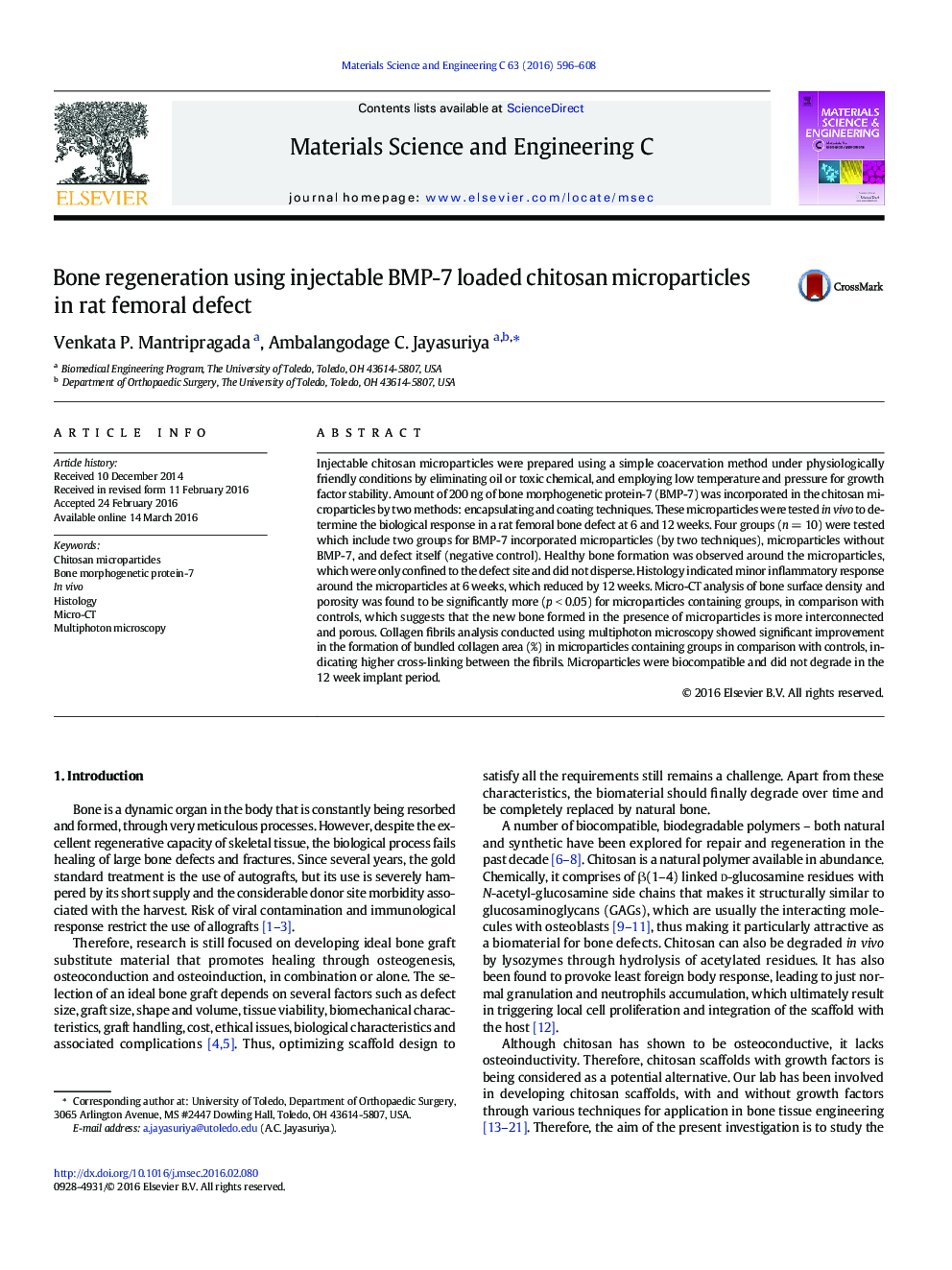| کد مقاله | کد نشریه | سال انتشار | مقاله انگلیسی | نسخه تمام متن |
|---|---|---|---|---|
| 1428053 | 1509158 | 2016 | 13 صفحه PDF | دانلود رایگان |

• Chitosan microparticles preparation eliminates the use of toxic chemicals.
• Microparticles are biomechanically stable and did not degrade within 12 weeks.
• High bone surface and connectivity density suggests good connectivity in new bone.
• Increased bundled collagen suggests biomechanically superior new bone formation.
• Nanogram level of BMP-7 is not sufficient for significant bone formation in vivo.
Injectable chitosan microparticles were prepared using a simple coacervation method under physiologically friendly conditions by eliminating oil or toxic chemical, and employing low temperature and pressure for growth factor stability. Amount of 200 ng of bone morphogenetic protein-7 (BMP-7) was incorporated in the chitosan microparticles by two methods: encapsulating and coating techniques. These microparticles were tested in vivo to determine the biological response in a rat femoral bone defect at 6 and 12 weeks. Four groups (n = 10) were tested which include two groups for BMP-7 incorporated microparticles (by two techniques), microparticles without BMP-7, and defect itself (negative control). Healthy bone formation was observed around the microparticles, which were only confined to the defect site and did not disperse. Histology indicated minor inflammatory response around the microparticles at 6 weeks, which reduced by 12 weeks. Micro-CT analysis of bone surface density and porosity was found to be significantly more (p < 0.05) for microparticles containing groups, in comparison with controls, which suggests that the new bone formed in the presence of microparticles is more interconnected and porous. Collagen fibrils analysis conducted using multiphoton microscopy showed significant improvement in the formation of bundled collagen area (%) in microparticles containing groups in comparison with controls, indicating higher cross-linking between the fibrils. Microparticles were biocompatible and did not degrade in the 12 week implant period.
Figure optionsDownload as PowerPoint slide
Journal: Materials Science and Engineering: C - Volume 63, 1 June 2016, Pages 596–608